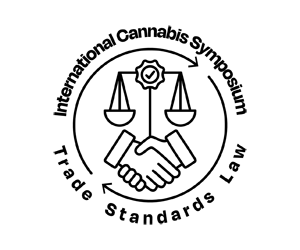Newsweed
The sector of light cannabis in Italy now generates directly and indirectly 1,963 billion’euros and supports 22,000 full-time jobs, according to a study by MPG Consulting DolceVitaOnline.
But this market is now’ threatened by the Meloni government which seeks to make it disappear.
Italian extreme-right’ at war with hemp
Despite its economic potential, the Italian market hemp and CBD oil is facing major obstacles due to restrictive government measures. Two controversial policies have been initiated:
- One ’ amendment to the Italian law on safety, that would prohibit the production and trade of hemp flowers and their derivatives, even if THC levels remain within the limits of the’UE.
- One decree classifying oral CBD as a narcotic, limiting its sale to pharmacies and requiring a non-renewable prescription. Ce the decree was temporarily suspended by the regional administrative court of Lazio in Italy in September.
La european Parliament committee on petitions discussed these restrictions on March 17, with Mattia Cusani, president of Canapa Sativa Italiana, arguing that these policies violate the laws of’UE on free trade and fair competition.
The commission sent an official complaint letter to the Italian government, giving Rome a 90-day deadline to respond. However, the European commission n’ has not yet taken definitive measures, frustrating those in the sector who fear an economic collapse if restrictive measures are implemented.
Weight of the Italian hemp sector
And the’study of MPG Consulting gives them grain to grind. In addition to estimating the economic potential of the sector, the’study makes a parallel between the’wine industry and that of hemp, suggesting that ’Italy could position itself as a European or even global leader in a cannabis light of superior quality, as it L’a made with the wine. The two industries share a close link with Italian culture and terroir, with distinct sensory experiences, regional varieties and structured quality standards.
The Italian wine industry thrives thanks to ’ appellations protected (PDO) and protected geographical indications (PGIs), which guarantee traceability and quality. If similar protections were applied to light cannabis,’Italy could strengthen its position in the European market while ensuring product safety and consistency.
The economists Adam Orens and Davide Fortin in addition, two economic scenarios were modeled for the’light cannabis industry: the’un in which sales continue via’s specialty stores, e-commerce and tobacco offices, and’other in the frame of’un monopoly controlled by the’ State.
- Free market scenario:
- Direct economic impact991.4 Million’euros
- Indirect economic impact970 Million’euros
- Total number of’jobs created22,379
- Monopoly scenario (sales via tobacco shops only) :
- Total economic impact530 Million’euros
- Total jobs created6,042
- Estimated loss of income: More than 1.4 billion’euros
Restrict sales to tobacconists this would significantly reduce the market, by eliminating many small and medium producers who are at the origin of l’innovation and de la product diversity.
« The profile of the average producer is very interesting and would disappear in the case of’a monopoly of tobacconists », explains Mr. Fortin.
In case of’ prohibition of production of hemp with active ingredients in Italy, 3,000 companies could be forced to close, putting at risk 15,000 jobs.
Dolce Vita Online
https://www.dolcevitaonline.it/cannabis-light-italia-2-miliardi-euro/#LA_CANAPA_COME_IL_VINO
The sector of cannabis light has an economic impact direct almost one billion euros, with another additional billion of impact indirect, and the creation of 22 thousand jobs full time.
These are the newly updated estimates of the Italian cannabis light market, therefore relating only to inflorescences, (without CBD and chopped oils) developed in a study by MPG Consulting, led by the specialized economist Davide Fortin together with the lawyer Maria Paola Liotti and commissioned by the association Hemp Sativa Italia.
This is a document of over 130 pages, which will be presented on April 2 at the press room of the Chamber and of which we are able to anticipate some data.
The document begins by outlining international laws and conventions, THC limits for industrial hemp in different countries, CBD properties and European hemp regulations, up to countries that have legislated on the inhalation use of light cannabis such as Belgium, Luxembourg and Switzerland. , to then reach Italy, law 242 and up to the quarrels of hemp and officinal.
The last part is dedicated to cheap models created to calculate economic impact and jobs in Italy. The last two chapters are dedicated to the analogies between the wine and hops sector.
Index
THE DOG LIKE THE WINE
Where you can read for example that: «The similarities between wine and hemp they are manifold and find a common matrix in the strong connection that these agricultural species have with the Italian territory, culture and history: both offer a complete sensorial experience (visual, olfactory and gustatory); there are valuable local varieties, with unique organoleptic qualities; both wine and cannabis have euphoric active ingredients; gastronomic combinations and tasting itineraries are possible; a market for trendy accessories for the consumption of both wine and cannabis is structured».

And that: «The wine sector in Italy is one of the pillars of the agricultural economy, being able to count on a centuries-old tradition and an important role in export and tourism. Italian wine is protected by structured regulations, which provide for protection protocols such as brands on protected designations of origin (PDO) and protected geographical indications (PGI), which guarantee the quality, traceability and typicality of the products».
As the report recalls: «In this context, some sector associations have jointly developed a specification for the cultivation and management of hemp inflorescences, essential for promoting good practices to be followed in agricultural production processes and high quality standards of the final product, just as happened historically for the wine market Italian. This specification presented in 2018 by Federcanapa, Confagricoltura and CIA-Agricoltori Italiani, defines the Good Practices for the production and processing of the female inflorescences of Canapa Sativa L. and, through a series of technical and operational prescriptions, aims to promote the national supply chain paying particular attention to quality parameters, traceability and environmental sustainability».
Let’s not forget that, according to a very recent study, the one between vine and hemp plant it could be an unparalleled combination, also from an agronomic point of view. Hemp in fact, if sown in the rows of vineyards, improves the soil thanks to the action of the roots and even the quality of the wine, as told by the study published on New Zealand Wine Grower and cared for by the winegrower Kirsty Harkness and the researcher in viticulture Dr Mark Know.
CANNABIS LIGHT IN ITALY AND ECONOMIC IMPACT
To understand the impact of cannabis light in Italy, economists Adam Orens and Davide Fortin imagine two scenarios: one for sales at specialized stores, e-commerce and tobacconists, as is the case today, and another, instead, which provides for the sale under the monopoly at tobacconists.
In first model, the economic advantages are certainly greater. According to economists, in fact, calculating retail, distribution and production would have a direct impact of 991.4 million euros with 12,533 full-time workers (cultivation, processing, distribution, administration, commercial operators). «Turning to turnover relating to the indirect impact of at least 970 million euros», explain, «there is a significant contribution given by the creation of works with high added value, such as lawyers, accountants, banking operators, programmers and producers of agricultural equipment, used for the processing of inflorescences or for packaging», for a total of 9,846 other workers.
The overall economic impact would therefore be of 1.963 billion euros, with a total of 22,379 workers.
The second model is that of the sale under monopoly through tobacconists. «The creation of a monopoly of tobacconists in the sale of hemp inflorescences destined for inhalation would have significant consequences on the market and on the national economy. Assuming a tax rate of 56.5% on these products, the value of the retail market, if managed exclusively by tobacconists, would be estimated between 148 and 247 million euros. In this scenario, the government could obtain tax revenues of between 110 and 184 million euros, in addition to those related to employee wages. In a monopolistic scenario, the turnover that would be lost between direct and secondary impact stands at over 1.4 billion euros. In terms of tax revenues, the loss would be at least 180 million euros, considering both VAT and taxes on uncollected profits».
The overall impact would be of 530 million euros for a total of 6,042 workers.
«What surprised me», explains Fortin a Sweet life, «the continuous increase in demand is despite the repressive policies implemented. It is an imported market, fully legal, but hampered by still incomplete legislation on intended use. The growth is largely due to word of mouth, given the impossibility for companies to promote their potential benefits without incurring the risk of being accused of marketing drugs without authorization ».
«A aThe other fact that I was struck by analyzing the Italian market is the increase in people who use hemp inflorescences as a substitute for tobacco. This is not a simple substitute, but a potentially healthier alternative, which could help reduce the consumption of one of the most harmful and addictive substances».
«Un another interesting aspect that I noticed from the results of the questionnaire administered to over 300 operators in the Italian supply chain», continue Fortin, «is the different type of growers operating in the market that we have divided into 3 types: small farmers, who retail all the crops, medium ones, who sell a little ’ retail and a little ’ wholesale, and then wholesalers. The profile of the average grower is very interesting, which would disappear in the case of the monopoly on tobacconists, because it is the actor who creates the most innovation buying from many different growers, and growing a large number of varieties. It works like a tester: the varieties that work resell them wholesale and re-cultivate them, without being forced to sell everything immediately, as the wholesaler does, using already run-in varieties. Instead, wholesalers, those who standardize more products and quantities, are the ones who would survive even in the event of a monopoly with tobacconists».
«Among the little actors», concludes, «most also grow other vegetables, hemp is like an extra agricultural commodity to be grown and proposed to increase one’s income».




















